Does your blog traffic look like this?
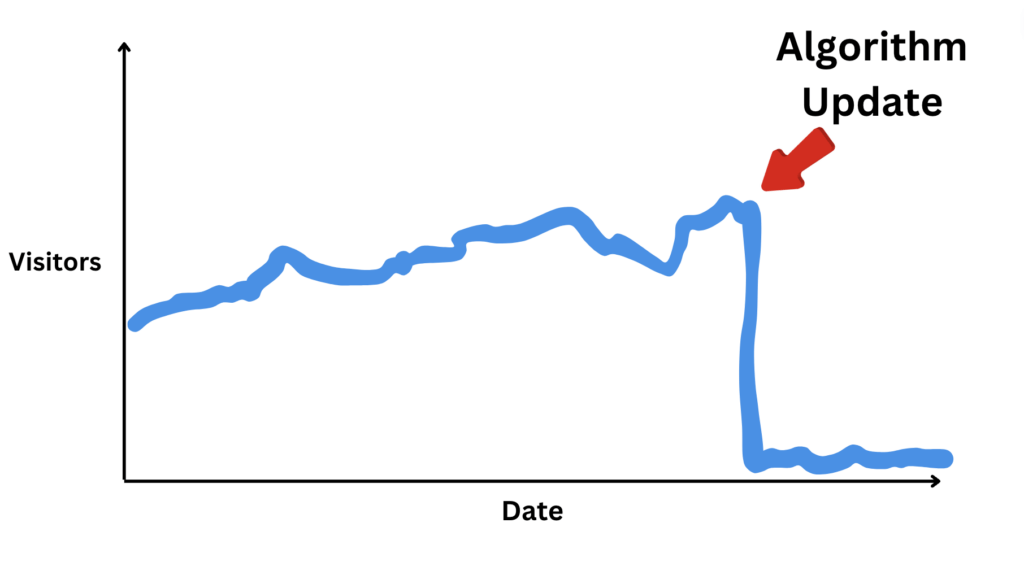
Google fine-tunes its ranking algorithm dozens of times a year. These shifts can impact blog and website rankings.
Usually, it just takes 3-5 weeks to automatically recover from Google algorithm updates.
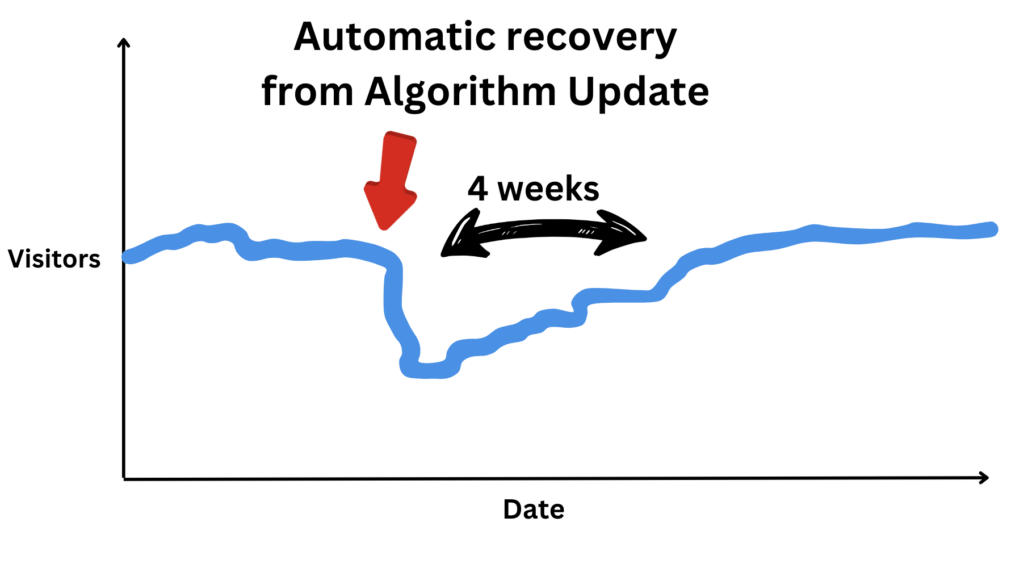
But if you’ve used SEO strategies, it can be really hard to recover from an algorithm update and get traffic back to normal levels.
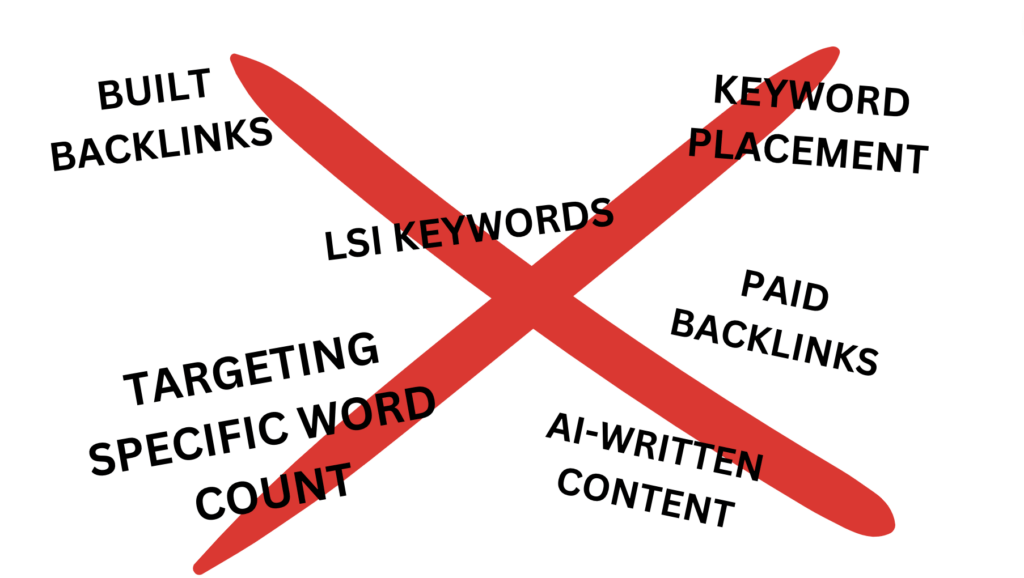
Let’s take a look at how you can recover from Google algorithm updates.
Is It Google Update in the First Place?
First, it’s worthwhile checking if it’s an algorithm update that’s causing your traffic to drop in the first place.
Google typically releases roughly 10 main algorithm updates each year, each capable of causing significant shifts in search results.
#1 Check Recent Updates
To identify if it’s a Google update, check if an update has taken place at publicly available lists of Google algorithm updates.
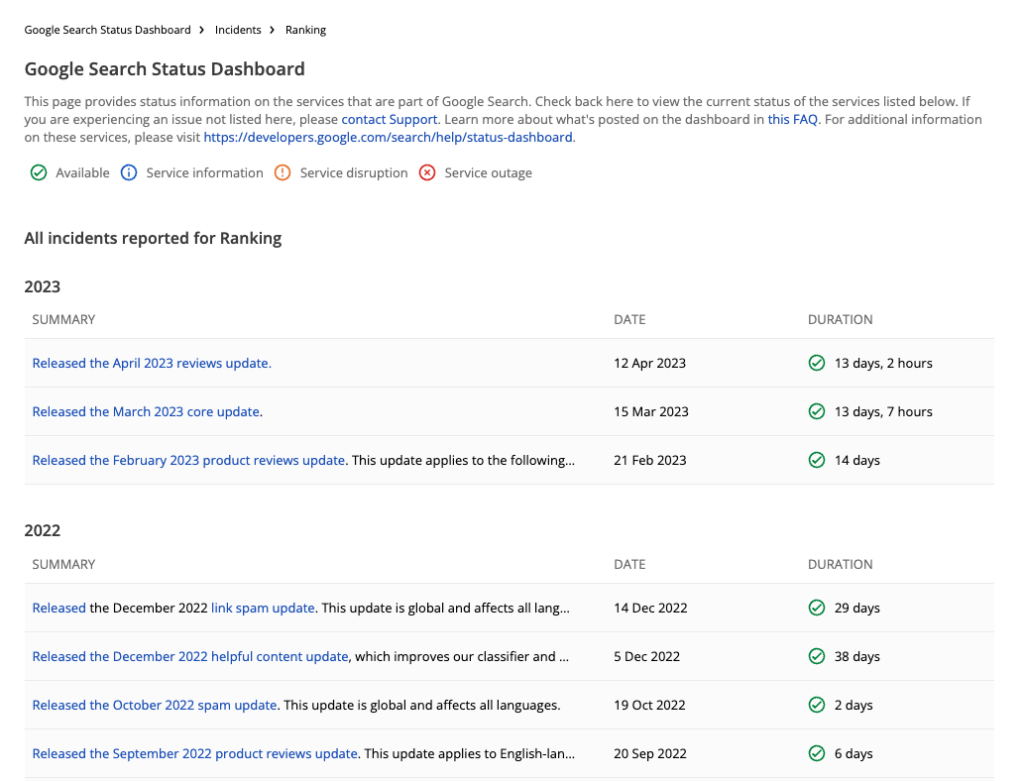
Notice that algorithm updates may take weeks to fully roll out.
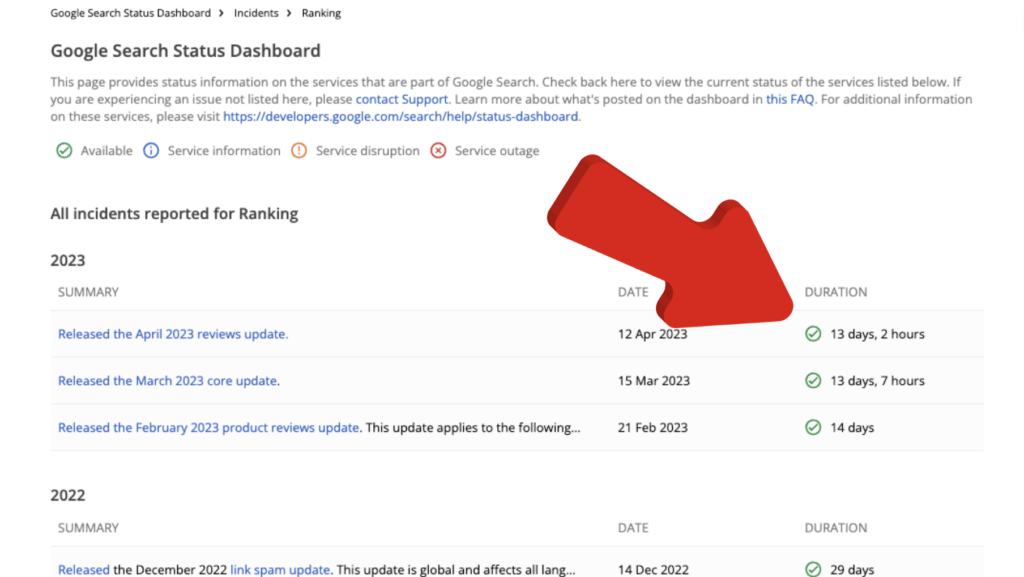
Any impact on your website might not be noticeable until a few weeks after the update – for better or worse.
Also, your site might get hit by an update but then recover on its own in a couple of weeks. This is actually what usually happens.
So don’t panic!
#2 Check Other Search Engines
Another way to tell if it’s Google is by examining your traffic from other search engines.
Remember, Google and other search engines like Yahoo or Bing are not dependent on one another.
If you lose rankings on Google due to an algorithm update, it’s extremely unlikely that Bing would do the same.
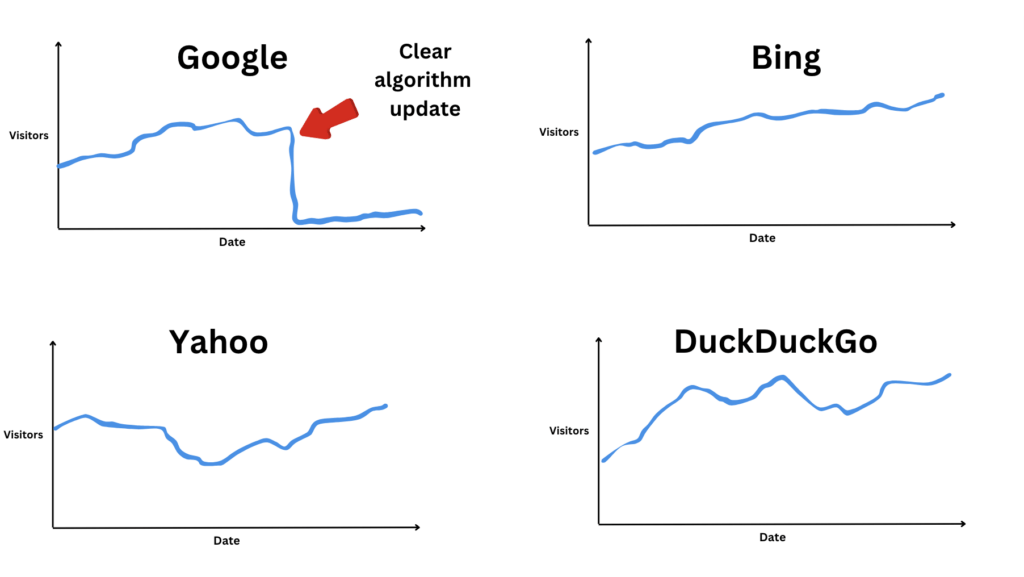
So if your Google traffic has dropped by 80% while the traffic from other search engines like Bing has remained consistent, it’s a strong indicator that a Google algorithm update could be the culprit.
But if the traffic is coming down in all search engines, it’s unlikely to be a Google algorithm update. The cause is something else.
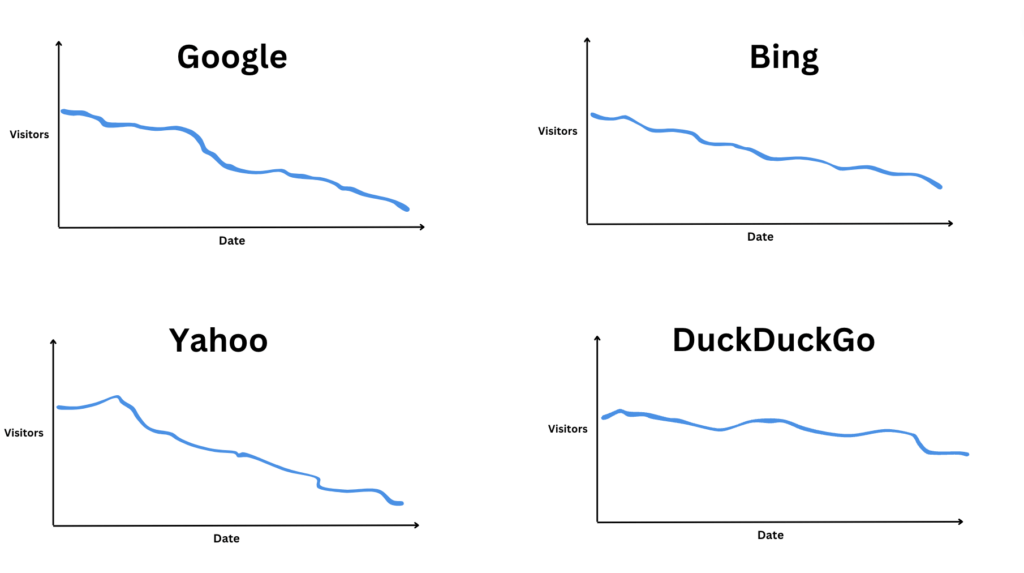
#3 Seasons Change
Almost all niches depend on seasons and events.
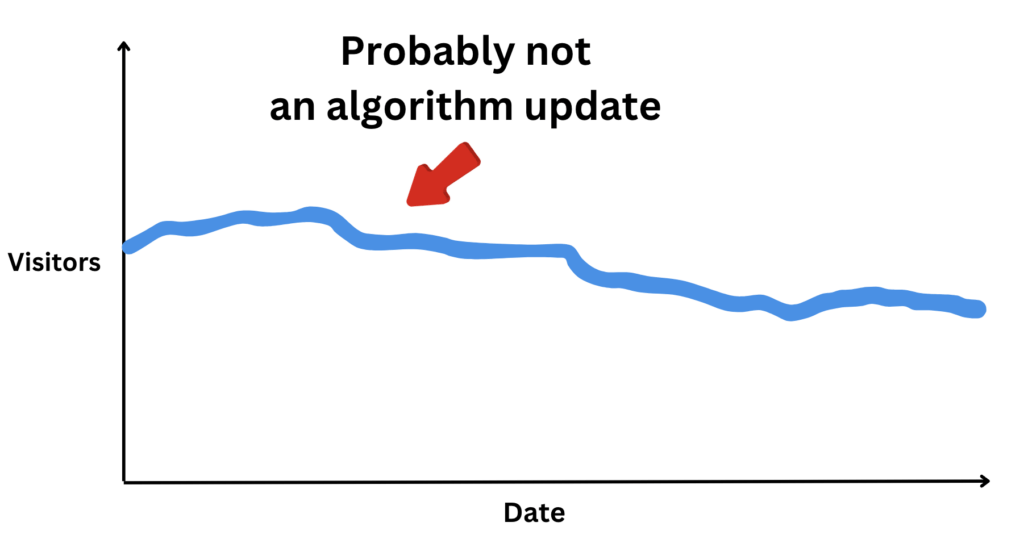
Major events can impact traffic.
Key holidays can drag traffic down.
There are many reasons that can alter rankings momentarily. Even a big overnight traffic drop might not be anything to worry about.
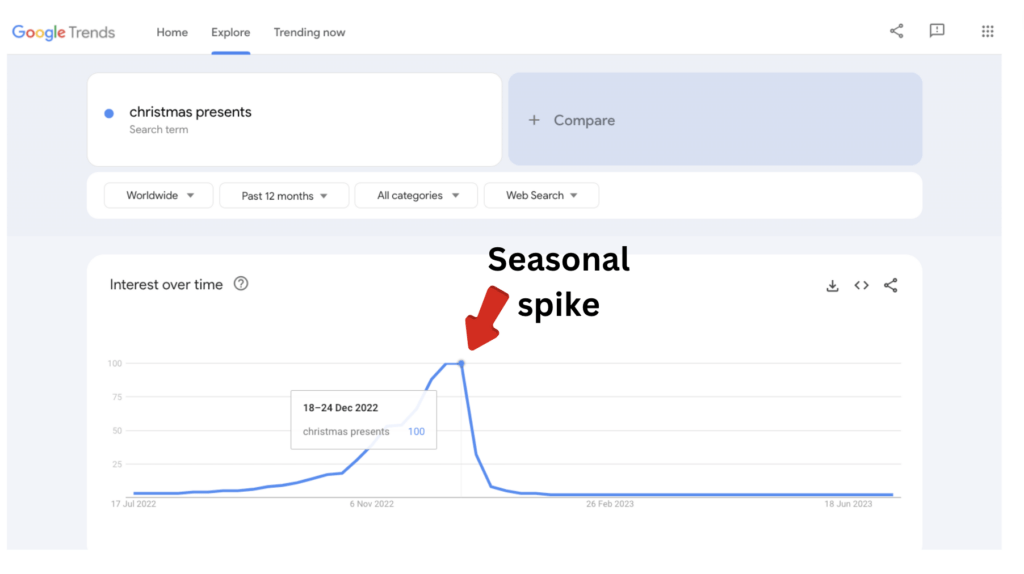
The Harsh Truth of Algorithm Updates
If you’ve built your site with WordPress or any other commonly used tool, your site is unlikely to be struck by a Google algorithm due to technical issues.
Also, if you’ve written content humans-first, you’re also very unlikely to get penalized by Google.
But if you’ve built your blog with SEO strategies (e.g. link-building, keyword placements), your site is on a shaky foundation that will eventually crumble with algorithm updates.
If this is the case, you might have to start from complete scratch.
Instead of building content search engines first, you need to think of people.
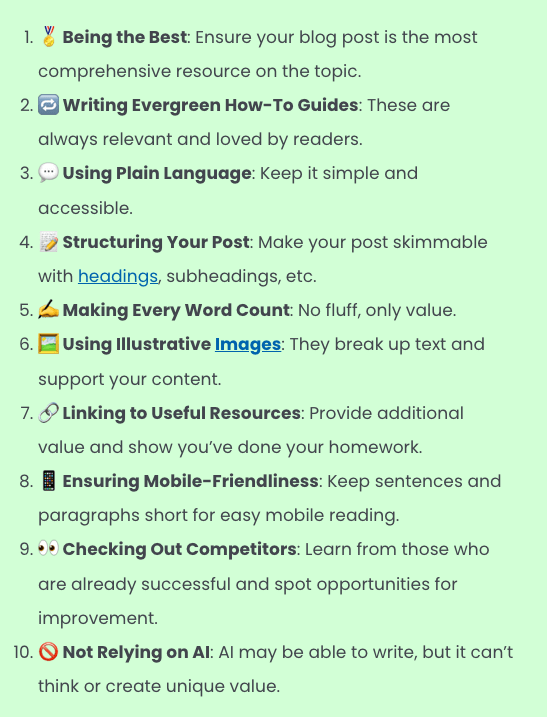
Cover your niche from A to Z and provide genuine value to your readers.
This has nothing to do with stuffing it with keywords and backlinks.
You should write for humans, not for robots. You don’t need to think about anything else except for people when you write.
Offer valuable, and relevant information to your readers. Strive to become a trusted resource within your niche.

So if you expect that your SEO strategies caused the site traffic to crash, this is a good turning point to start doing things the right way.
The only way to rank high on Google is by providing unique and useful content that’s better than anyone else has ever written.
5 Tips for Recovering from a Google Algorithm Update
Let’s take a closer look at concrete steps you can take to recover from Google algorithm updates.
Here are tips for recovering from the latter case.
#1 Avoid SEO Strategies
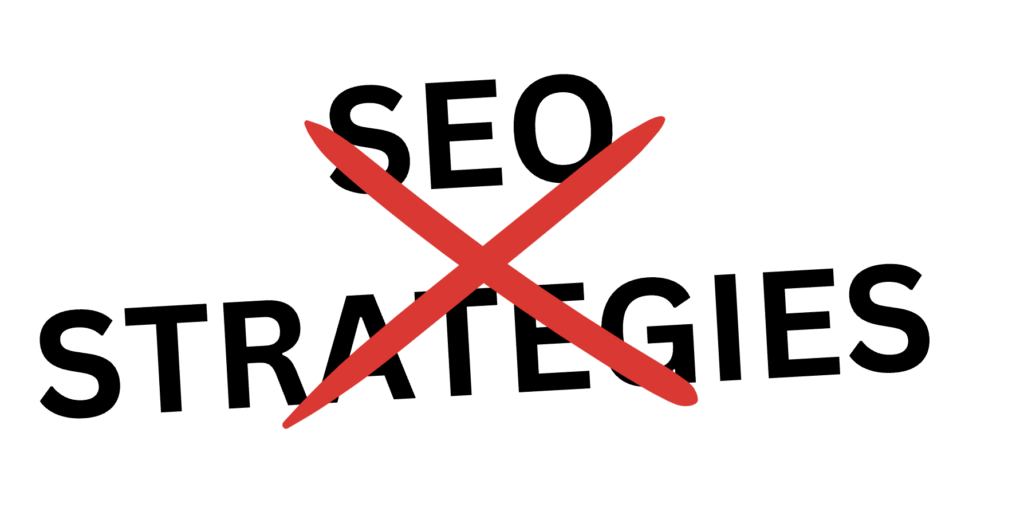
As said earlier, relying on SEO tactics to rank high puts your blog at risk during algorithm updates.
If you’ve built links, placed keywords, used AI, or for example aimed to a specific word count, you might be in hot waters.
If this is the case, you might need to rewrite all your content or heavily edit it.
Here’s how to do it the right way:
- Pour your knowledge, unique takes, and expertise into every blog post.
- Add a ton of images you’ve taken to supplement the content.
- Link to truly useful reads.
- Cover absolutely every topic in your niche.
- Write humans first.
And yes, this can mean significant time investments, but at the end of the day, it’s worth it to do things the right way.
#2 Too Many Ads?
Overloading your site with ads can hamper the user experience. This puts you at risk of being struck by an algorithm update.
I mean would you recommend a site like this to anyone?

I bet you wouldn’t. And so doesn’t Google.
These days, people automatically ignore ads (“banner blindness“). Thus, the ad strategies are very aggressive.
Usually, there needs to be dozens of ads per page for you to earn anything. But this is bad for your site when it comes to having a strong standing with Google.
By the way, if the ad network you use is “Google-certified”, that won’t help here. A Google-certified ad partner can still flood your site with ads and cause it to crash on Google.
To resolve the issue, reduce the number of ads significantly.
Notice that the ad networks won’t recommend this. They’re afraid that they’ll earn less if you choose a more lenient strategy.
So you’re on your own with this one.
If you have ads on your site, make sure it’s usable and loads fast.
Compare your site’s performance to your competitor’s sites. You don’t need expensive tools or heavy maths. Instead, use common sense.
Is your site about as fast as your competitors?
Is your site as easy to read and navigate through as your competitor’s?
Remember that Google’s goal is to recommend the most valuable and useful resources for searchers. If your posts have useful information but the site doesn’t load, it’s not much of a use.
Read also: Why You Should Not Place Ads on Your Blog
#3 Follow Google Guidelines
Familiarizing yourself with Google Search Essentials is a must.
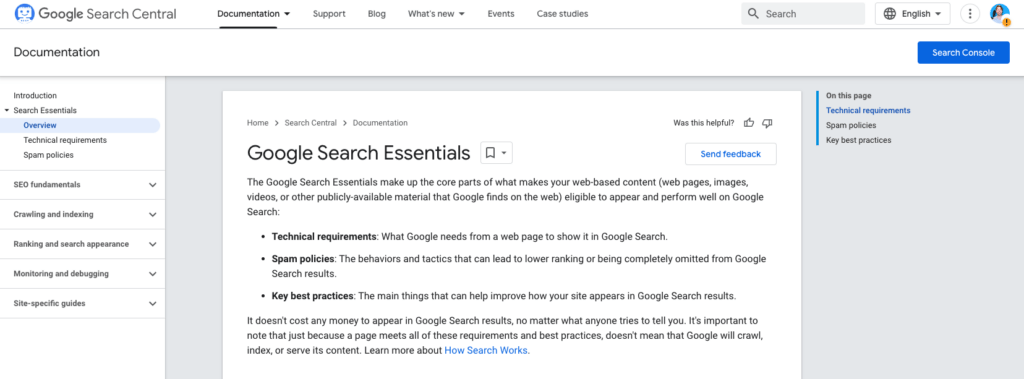
It’s a hefty read but certainly worth understanding. Compliance with these guidelines is beneficial.
Build your blogs with a people-first approach.
Trying to please the ranking algorithm can give you a momentary advantage, but it won’t keep your site in the search results in the long run.
Obviously, by reading the search guidelines, you won’t be able to make overnight changes to your content.
But it’s a good time to adapt to the right mindset!
#4 Check for Manual Penalties from Google
Use Google Search Console to check if your site has been hit with a manual penalty.
This is because it literally takes 5 seconds to check.
Just open up Google Search Console, and check Security & Manual Actions. Make sure both Manual actions and Security issues are clear.
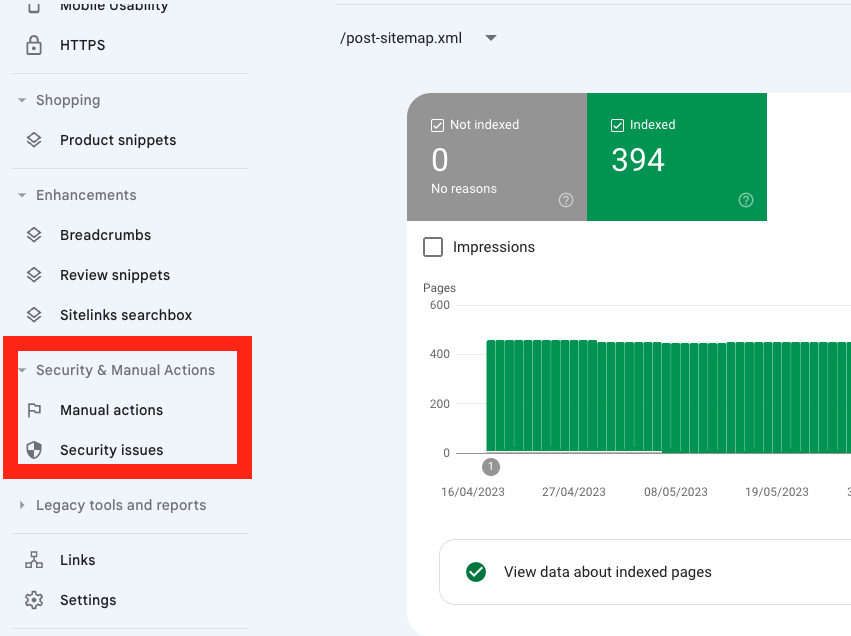
Unless you’ve done something crazy to your site (like plagiarised content), this is most likely not causing your rankings to drop.
If you see a message there, make sure to react accordingly!
#5 Be Patient and Persistent
Recovery from an algorithm update won’t happen overnight.
Stay patient, keep improving your site and content, and avoid SEO strategies when writing content.
Remember that many times, algorithm updates shake things around. But things return back to normal in a couple of weeks.
So unless it’s less than 4 weeks from an update, there’s no need to worry, even if your traffic was plummeting.
Wrap Up
If you’ve been hit by a Google update, verify it first, then assess your blog critically 🧐.
Have you used SEO strategies on your blog?
Are you providing valuable content?
Are you in line with Google’s guidelines?
Remember to always write for humans, not for robots! That’s the only long-term strategy on Google.
Stay patient 🐢, keep refining your strategies 💡, and above all, focus on delivering quality to your readers 👥.
Thanks for reading. Happy blogging!
